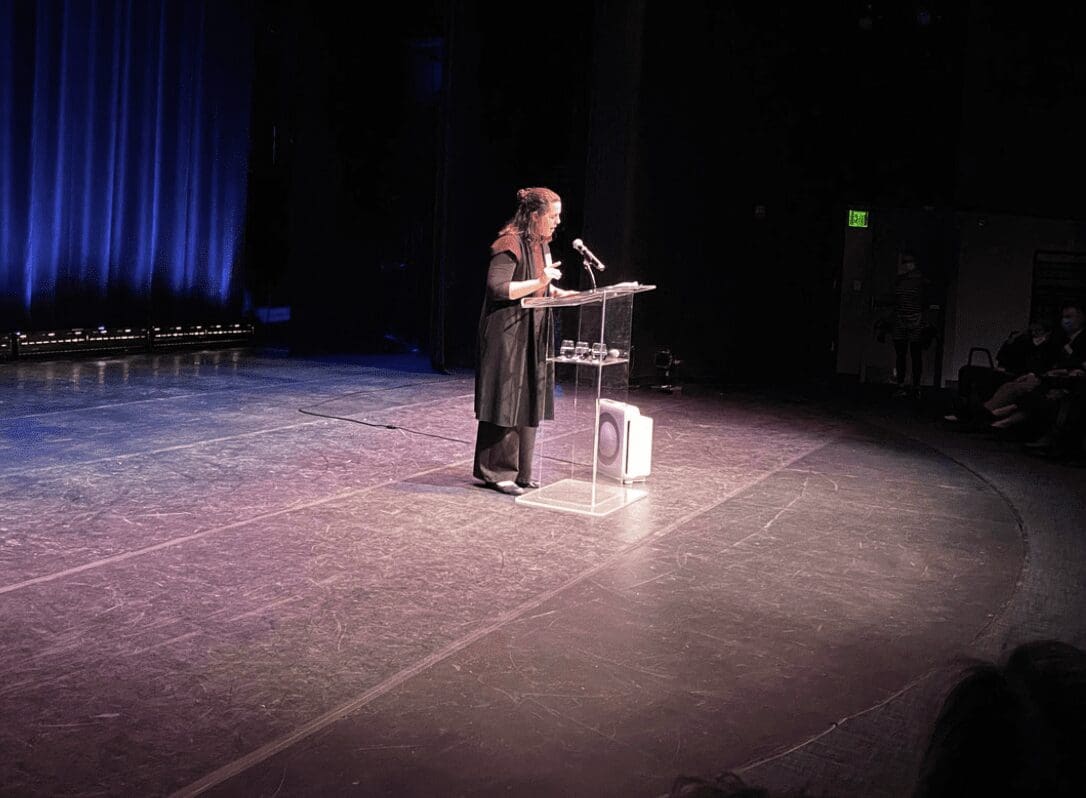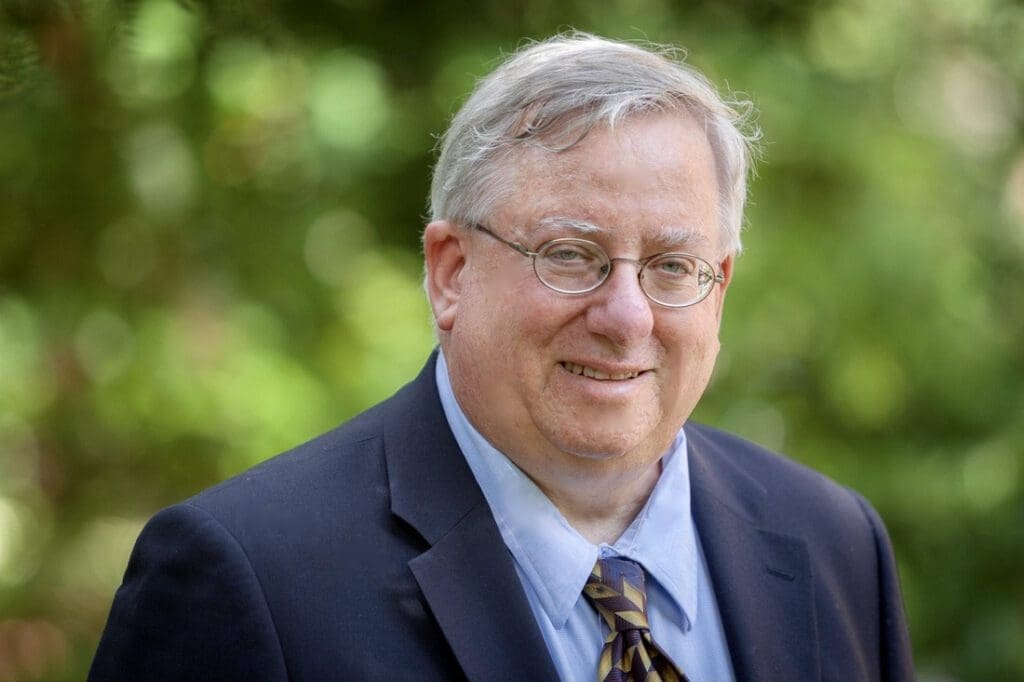Search Posts
Recent Posts
- Real Estate in RI: Seaside waterfront communities are all the rage. Who’s buying – Emilio DiSpirito June 6, 2025
- Outdoors in RI: 2A votes, Charter Yachts, active summer programs, garden tours, aquatic weeds… June 6, 2025
- All About Home Care, with two Rhode Island locations, closing after 22 years in business June 6, 2025
- GriefSPEAK: Angel wings with footprints – Mari Nardolillo Dias June 6, 2025
- Rhode Island Weather for June 6, 2025 – Jack Donnelly June 6, 2025
Categories
Subscribe!
Thanks for subscribing! Please check your email for further instructions.

Environmental storytelling – Rachel Carson was right! – Richard Asinof
by Richard Asinof ConvergenceRI, contributing writer
Photo: Rebecca Altman, Ph.D., talking at the Silent Spring Institute’s 2022 Gala Celebration in honor of the 60th anniversary of the publishing of Rachel Carson’s Silent Spring. – R. Asinof
The Silent Spring Institute’s celebration of Rachel Carson, whose work, “Silent Spring,” was published 60 years ago in 1962 by The New Yorker, challenges us to speak out as the next toxic wave promises to engulf us all.
What was once the sprawling home of the Watertown Arsenal along the banks of the Charles River, which defined the origins of the American military industrial complex for more than a century, from the Civil War through World War I and World War II, is now the national headquarters of Athenahealth, a private company focused on health care technology, investing in mobile apps and point-of care delivery across the U.S.
The economic transition from armaments to investments in health care technology can best be summed up by the fact that UnitedHealth Group’s profits exceeded $5.2 billion in the third quarter of 2022, as reported by Forbes. The economic drivers were strong performances by medical care benefits managed under the Optum umbrella and the insurer’s Medicare Advantage plans. [Did you know that two of Rhode Island’s three Managed Care Organizations for Medicaid members – UnitedHealthcare and Neighborhood Health Plan of Rhode Island – both use Optum to manage health benefits?]
Call it an astonishing juxtaposition – a convergence – that the national headquarters of Athenahealth, née the Watertown Arsenal, should serve as the location for the Silent Spring Institute’s 2022 Gala Celebration, held on Wednesday evening, Oct. 12, in honor of the 60th anniversary of the publication of Rachel Carson’s Silent Spring in The New Yorker, at the Mosesian Center for the Arts, at 321 Arsenal St.
As the program for the evening’s activities described the impetus for the founding of the Silent Spring Institute: In 1993, the Massachusetts Department of Public Health published, for the first time, cancer rates by town. Alarmed by reports of elevated breast cancer rates in 11 of the 15 towns on Cape Cod, members of the Massachusetts Breast Cancer Coalition called for a scientific investigation. They founded “a laboratory of their own” and named it Silent Spring Institute in tribute to Rachel Carson.
The evening’s events were co-hosted by WGBH media personalities Jim Braude and Margery Eagan. The gala featured a performance by Boston Ballet dancers Viktorian Kaptonova and Daniel Rubin, and music and songs by Susan Werner.
The celebration paid tribute to the legacy of Rachel Carson, and featured two speakers: Julia Brody, Ph.D., executive director of the Silent Spring Institute, talking about “Rachel Carson the Scientist” and Rebecca Altman. Ph.D., a Rhode Island-based writer and environmental sociologist, talking about “Rachel Carson the Advocate.”
Altman has been featured in interviews in ConvergenceRI. [See links below to ConvergenceRI stories, “A conversation with the next Rachel Carson,” and “What’s entangled and enmeshed in the plastic is us.”]
Her forthcoming book, The Song of Styrene: An Intimate History of Plastics, is being published by Scribner Books, an imprint of Simon & Schuster.
Setting the stage
In her 2022 book, How To Sell A Poison: The Rise, Fall, and Toxic Return of DDT, author Elena Conis revealed the disturbing tale of how tobacco industry lobbyists, led by Philip Morris executives, “were funding an entirely separate campaign, one to bring back DDT,” according to Conis.
“The tobacco industry had no interest in selling the pesticide, of course; it was trying to sell cigarettes,” Conis wrote. “But it found DDT’s story to be a helpful scientific parable, one that, told just right, illustrated the problem of government regulation of private industry gone wrong.”
As Conis reported, “Discredit a scientist,” advised a set of guidelines drawn up by a Philip Morris front group in the [1990s], “but don’t spread the word yourself. Get the news media to do it.”
The results of the tobacco executives’ efforts, Conis wrote, were still being played out today: “They obliterated the U.S. public’s trust in science. They stoked today’s climate-change doubts, GMO stalematers, vaccine fears, and COVID denial. They led us to the moment we’re not living in, a moment in which science is intensely polemical and politicized.”
Another important source of comprehensive reporting about the lasting legacy of DDT is by Los Angeles Times reporter Rosanna Xia about the dumping of DDT off the Carolina coastline
Environmental storytelling
In her brief 15-minute talk, Altman connected the legacy of the work by Rachel Carson to the activism by biologist Sandra Steingraber, Ph.D., and its influence on Altman’s own writing.
Altman had described how Steingraber, a cancer survivor herself, had carried a sign that read, “Rachel Carson was right,” when she joined with other breast cancer activists to demand more research into environmental plastics in Massachusetts and its relationship to breast cancer. [Editor’s Note: Steingraber’s activism has continued; last year, she was arrested at the White House, reading aloud a letter signed by more than 400 scientists, asking the President to declare a climate emergency.]
Altman said that Steingraber had urged her to read Silent Spring as a literary model, to listen to Carson’s meter, the rhythm of her prose. Through Carson, Steingraber had learned the art of environmental storytelling. And, Altman continued, it was through Steingraber that Carson’s legacy was passed on to me.
“I didn’t know, not then, that I had a story to tell,” Altman said. “Plastic runs in my blood. I am the daughter of a plastics maker.”
Most recent revelations
The most recent revelations include reports by scientists that microplastics had been found in human breast milk. Following her talk, ConvergenceRI asked Altman about what implications those findings might have on health care investments and regulation.
ConvergenceRI: What are the data connections that need to be made between plastics, and endocrine disruption, as a lever for health care investments and regulation? The fact that microplastics have been found in human breast milk, what do we do with that information?
ALTMAN: In environmental health, it is often the case that exposure data is way out in front of health data. This is the case with microplastics. Their toxicology is an active area of research, one in which scientists are working along multiple lines of questioning, both for the physical plastics themselves [there are so many variants, so many sizes and shapes and chemical compositions of micro- and then nano-scaled particles], and also for the toxicology and endocrinology of the additives.
There is quite a bit known about the BPA, phthalates, parabens, and several classes of flame retardants, for example, like the polybrominated diphenyl ethers [PBDEs)]. One UV stabilizer is currently being considered for inclusion as a Persistent Organic Pollutant under the Stockholm Convention.
Dr. Leo Tresande wrote in The Lancet about endocrine disruption and plastics and the possibility of a global treaty on plastics: “Plastics are increasingly straining water systems and wildlife. The UN responded on May 30, 2022, by launching treaty negotiations in Dakar, Senegal, for an internationally legally binding instrument to end plastic pollution.Health was barely mentioned in the announcement of the treaty process, and WHO has been noticeably silent. Yet the proliferation of plastics has produced large-scale consequences for endocrine diseases and dysfunctions. Plastics are a crucial source of endocrine-disrupting chemicals, commonly known as EDCs.”
Overall, this is a very challenging area of research. One made all the more tricky by plastics’ ubiquity, which was something the researchers behind the latest microplastics-in-breastmilk-study remarked upon: “The ubiquitous MP presence makes human exposure inevitable.”
I am watching closely what California is doing – they are on the path to figure out a process for monitoring and regulatory microplastics in drinking water, and engaging with this research in an important way.
ConvergenceRI: What are the visual images that you believe will resonate most with the younger generation in telling the story of the message: “Rachel Carson was right!”
ALTMAN: I’m not sure. Nor am I sure that’s the endgame. Her influence was vast, and has shaped the work of generations of writers, researchers and advocates, yes, but there are so many who have and are presently doing this work, working toward climate justice and environmental justice and addressing toxic releases and the petrochemical build-out. And their influences are multiple and vast, including but well beyond Carson.
___
To read more articles in RINewsToday by Richard Asinof, go to: https://rinewstoday.com/richard-asinof/

Richard Asinof is the founder and editor of ConvergenceRI, an online subscription newsletter offering news and analysis at the convergence of health, science, technology and innovation in Rhode Island.
